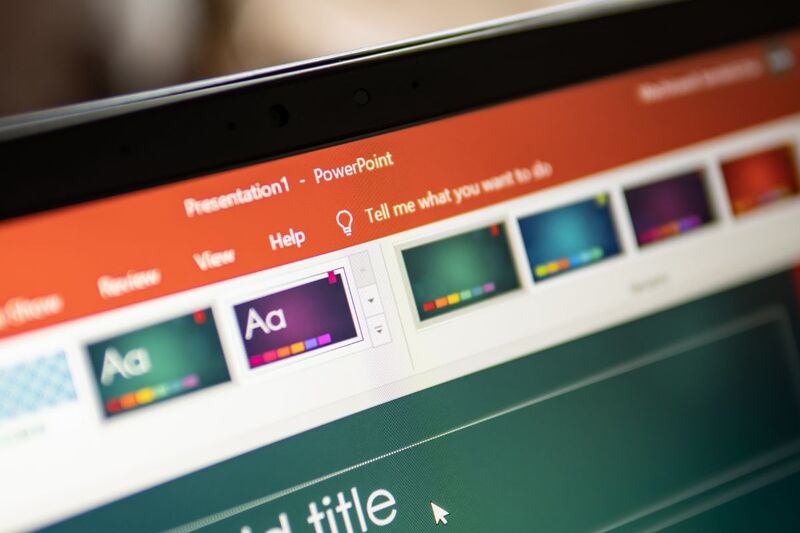Is PowerPoint Dead? Top 5 Alternatives Changing Business Communication

This article is written in English for readers in Singapore. Chinese and Japanese translations are available on our website.
The End of the One-Way Slide
For three decades, Microsoft PowerPoint ruled corporate communication.
But in the age of Gen AI, remote work, and interactive storytelling, linear slides are no longer enough.
A 2025 LinkedIn Workplace Learning poll found that 78 % of professionals prefer collaborative or visual-first presentation tools that allow real-time edits and video integration.
Enter a new generation of platforms redefining how teams pitch ideas, onboard clients, and train staff.
Why PowerPoint Is Losing Ground
PowerPoint still commands roughly 86 % market penetration in corporate settings (Statista 2024), but usage is declining among start-ups and digital-first firms.
Younger professionals value speed, design flexibility, and live collaboration—features traditional decks struggle to deliver.
Meanwhile, employers want tools that integrate with Slack, Teams, or Notion, while professionals want platforms that build career-ready communication skills.
The Top 5 Alternatives Transforming Presentations
1. Canva Presentations — The Design Democratiser
Used by over 190 million monthly users (2025), Canva’s drag-and-drop simplicity makes it a go-to for SMEs and recruiters alike.
Teams can co-edit slides, generate visuals with Canva Magic Design AI, and publish decks directly to the web.
Why it matters: Canva enables anyone—from HR to marketing—to create branded, professional decks in minutes.
2. Google Slides — The Collaboration Standard
Still a staple for hybrid teams, Google Slides powers over one billion active users via Workspace (Google 2025).
Its strength lies in real-time co-editing and version history.
Why it matters: Perfect for cross-border Reeracoen teams or clients managing multiple contributors on tight deadlines.
3. Pitch — The Start-Up Favourite
Founded in Berlin, Pitch combines sleek templates with asynchronous collaboration—allowing teammates to comment and record mini-videos within slides.
Its AI summariser highlights discussion points automatically.
Why it matters: Fast-growth firms like to use Pitch for investor decks and monthly performance reviews; efficiency meets storytelling.
4. Prezi — The Visual Storyteller
Prezi’s zoom-based interface lets presenters move fluidly between ideas instead of flipping through slides.
Academic and training institutions report 40% higher audience recall using non-linear presentation flows (Prezi Education 2024).
Why it matters: Great for educators, consultants, and leaders who want immersive narratives instead of static bullet points.
5. Tome & Beautiful.ai — AI-Native Pitch Builders
Tome and Beautiful.ai generate slide outlines and visuals instantly from text prompts.
Tome’s user base grew 400% in 2024 after integrating OpenAI GPT-4.
Why it matters: Professionals save hours while maintaining design consistency—ideal for recruiters preparing client proposals or candidates building portfolios.
The Future of Presentations in Singapore
1. From Decks to Narratives
Recruiters, managers, and jobseekers alike are turning presentations into interactive narratives embedded with data, polls, and video.
2. From Individual to Collaborative Creation
With hybrid work the norm, co-creation on platforms like Google Slides and Canva is now standard for regional teams.
3. From Static to Dynamic Learning
Companies use these tools for L&D micro-modules—replacing PDFs with interactive decks.
The MOM and SkillsFuture Singapore have emphasised digital communication as a key competency in their 2025 Skills Demand Report.
What This Means for Companies and Workers
| For Employers |
For Professionals |
|---|---|
| Improve brand consistency with template libraries. | Showcase design and storytelling skills to future employers. |
| Reduce training costs by reusing interactive decks. | Build AI and visual communication skills for career mobility. |
| Engage clients and staff through dynamic content. | Collaborate more seamlessly with global teams. |
PowerPoint isn’t disappearing—but it’s sharing the stage with tools built for a faster, more visual era.
Key Takeaway
The question isn’t “Is PowerPoint dead?” but “Is your presentation skill future-ready?”
Whether you’re pitching to clients or interviewing for your next role, success in 2026 will depend on how well you combine AI, design, and human storytelling.
🔍 FAQ: Future of Presentation Tools 2026
Q1. Will PowerPoint be phased out?
No — Microsoft continues active updates, including Copilot AI features. But new tools offer greater flexibility and design automation.
Q2. Which tools are most used by Singapore companies?
Google Slides and Canva lead among SMEs; MNCs still rely on PowerPoint with AI plugins.
Q3. Are AI presentation tools secure for corporate data?
Yes—if you use enterprise versions with data controls and avoid uploading sensitive information to public models.
Q4. What skills should workers develop for 2026?
Digital storytelling, AI prompting, and visual design using collaboration platforms.
💼 Want to build a future-ready workforce? Book a consultation with our HR specialists.
👩💼 Looking for creative professionals skilled in AI tools? Submit your Job Description here.
✅ Final Author Credit
By Valerie Ong (Regional Marketing Manager, Reeracoen Singapore)
Published by Reeracoen Singapore — a leading recruitment agency in APAC.
Related Articles:
- [AI in Hiring: Policy, Bias & Practical Guardrails for HR]
- [Top 10 Hiring Trends to Watch in 2026 (Singapore)]
- [Cracking Retention in 2026: Why Onboarding Makes or Breaks Engagement]
📚 References
- Statista (2024): PowerPoint usage share worldwide
- LinkedIn Workplace Learning Report 2025
- Canva Press Release 2025: 190 million monthly users
- Google Workspace Integration Usage Statistics (2025)
- Prezi Education Impact Study 2024
- SkillsFuture Singapore – Skills Demand for the Future Economy 2025

Disclaimer:
The information provided in our blog articles is intended for general informational purposes only. It is not a substitute for professional advice and should not be relied upon as such.
While we strive to provide accurate and up-to-date information, the ever-evolving nature of certain topics may result in content becoming outdated or inaccurate over time. Therefore, we recommend consulting with qualified professionals or experts in the respective fields for specific advice or guidance. Any actions taken based on the information contained in our blog articles are solely at the reader's discretion and risk. We do not assume any responsibility or liability for any loss, damage, or adverse consequences incurred as a result of such actions.
We may occasionally provide links to external websites or resources for further information or reference. These links are provided for convenience and do not imply endorsement or responsibility for the content or accuracy of these external sources. Our blog articles may also include personal opinions, views, or interpretations of the authors, which do not necessarily reflect the views of our organisation as a whole. We encourage readers to verify the accuracy and relevance of information presented in our blog articles and to seek professional advice when needed. Your use of this website and its content constitutes acceptance of this disclaimer.



